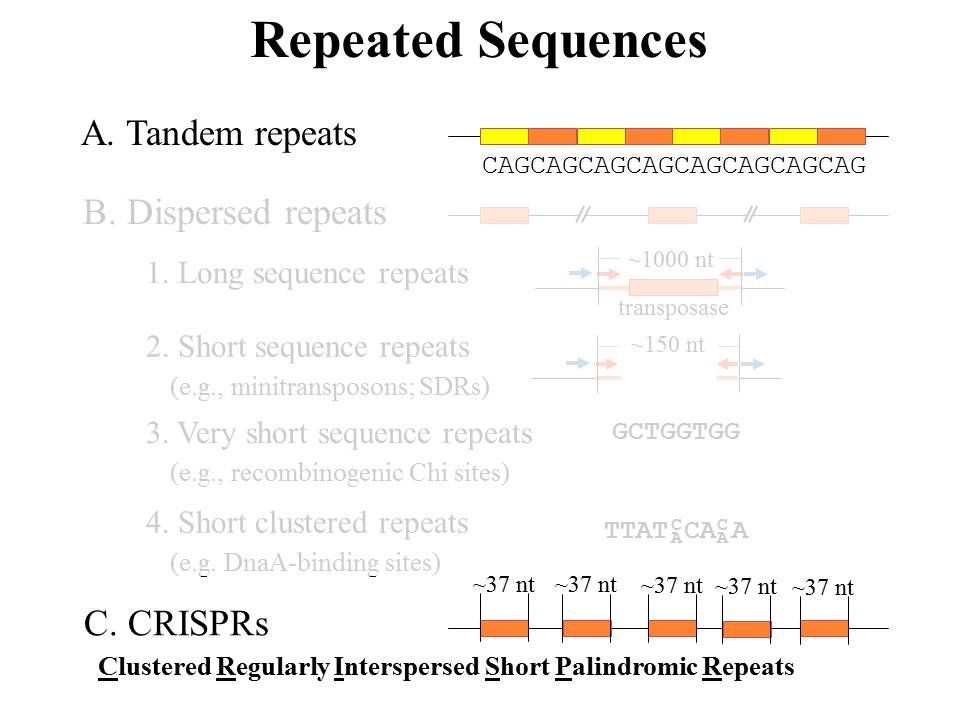Tandem repeats -- short oligomeric units repeated one after another -- are of great importance in human disease and forensic identification, however they have been much less studied in bacteria. You've encountered an instance of large numbers of 7-nt tandem repeats in the genome of the cyanobacterium Calothrix PCC 7601, but their general prevalence in bacterial genomes is unknown as is their function, if any. Identifying these sites is certainly of interest, but greater insights can come from comparing them, either within a single genome or amongst several genomes. For example:
...and so forth.
- Where do they occur in the genome? In genes? Downstream from genes? Upstream?
- Are their sequences conserved between different related bacteria?
- How fast do their sequences change in evolutionary time?
- How fast do their positions change in evolutionary time?
- Any clues as to their function?

CRISPRs (Clustered Regularly Interspersed Short Palindromic Repeats) are almost-tandem repeats, with regular gaps separating the units. They are much better understood, both in the means by which they arise and their functional significance to the host bacterium.
Articles of possible interest:
- Mazel D, Houmard J, Castets AM, Tandeau de Marsac N (1990).
Highly repetitive DNA sequences in cyanobacterial genomes.
J Bacteriol 172:2755-2761.
- Troyanskaya OG, Arbell O, Koren Y, Landau GM, Bolshoy A (2002).
Sequence complexity profiles of prokaryotic genomic sequences: A fast algorithm for calculating linguistic complexity.
Bioinformatics 18:679-688.
- Sorek R, Kunin V, Hugenholtz P (2008).
CRISPR - a widespread system that provides acquired resistance against phages in bacteria and archaea.
Nature Rev 6:181-186.Notes of possible interest:
- Repeats, Tandem Repeats, and Pattern Matching
- Finding local repeats
- Small dispersed repeats (methods also find tandem repeats and CRISPRs)
- Computational detection of origins of replication